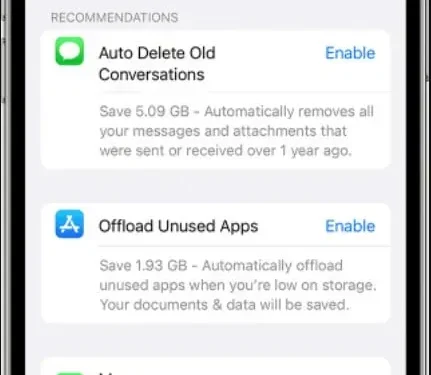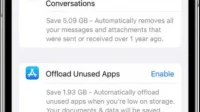Since the release of iOS 14, thousands of Apple customers have installed the latest version on their devices. While expected to meet new features, users are reporting problems – iPhone keeps restarting.
Complaints on the forums say that iPhones reboot every few minutes. Or it enters the boot loop and displays the Apple logo. Users of iPhone 6S, iPhone XS, XR, 11, 11 Pro, 11 Pro Max, and even later, including 12, are reportedly experiencing this issue.
Obviously, this affects the performance of the device. Several users have also said that they are asked over and over again to enter their password.
Seeing the scale of the problem, many users shared their suggestions on different platforms. However, Apple is also advising on how to fix the iPhone restart issue among an active user base.
What was the reason for the iPhone to restart?
Now that we know about the problem, let’s first look at the possible causes of the problem. You will most likely be able to determine the cause. And invest your time in finding the right solutions instead of trying dozens of them.
1. Unstable updates
One of the main reasons for your iPhone OS misbehaving can be the problems with the iOS system itself. It’s possible that a recent update isn’t working as smoothly as expected. Or your iPhone doesn’t meet the minimum system requirements to use the update effectively.
2. Hardware problems
We hope that your iPhone has not suffered any hardware or physical damage. If this is the case, there is a chance that this may be the cause of repeated restarts of your Apple mobile device. When performing this test, consider hardware such as the charging adapter, cable, and power outlet.
3. Bought a faulty device?
It’s a fact that every Apple product, including the iPhone, is thoroughly tested using a quality assurance process. However, there is always room for process improvement. It’s rare, but it’s possible that you have a defective device from the day you made your purchase.
4. Incompatible applications
In order for an application to run smoothly on iOS versions, it is important that its compatibility is verified by the developers. An added benefit would be to test it with regular OS updates.
Unfortunately, not every app provider is diligent enough to meet the standards. Hence, you may be dealing with an iPhone that keeps restarting due to one such bad or incompatible app.
5. Storage issues
Finally, you can check the available space on your iPhone. Any app and OS that promises an amazing user experience needs enough memory on the device it’s running on. Thus, make sure your iPhone is not on the verge of running out of space.
When Your iPhone Keeps Restarting Most Often
Now that you know the most common and likely problem triggers, you can plan your theory around them.
In addition, you can also start tracking iPhone restart frequency for reference. To do this, you can check if your Apple device is getting hot while charging.
Or if it’s due to low battery or when you’re running multiple heavy apps at the same time. The idea is to take note of the frequency or situation that triggers the restart and track it down for a permanent fix.
10 Ways to Fix iPhone Restart Problem
Let’s take a quick look at the possible solutions to fix the iPhone restart issue.
- Prepare a backup of your iPhone data
- Install only stable iOS updates
- Ensure there are no hardware problems
- Check charger and charging port
- Double check your SIM card
- Free up storage space
- Check error logs
- Install only compatible apps
- Reset default settings
- Restore your iPhone to factory settings
1. Prepare a backup of your iPhone data
First things first. Since you may be working on effective solutions for different users, it’s best to prepare for the worst case scenario. To do this, prepare a backup in advance to avoid data loss.
After that, move on to the solutions mentioned in the following sections.
2. Install only stable iOS updates
We understand how terrible software failure can be. Therefore, we recommend that you install software updates only on compatible device versions. On the other hand, this suggestion does not rule out the fact that in some cases OS problems may still occur.
An easy way to deal with this is to check if there are any updates related to your iPhone OS.
Here are the steps to test it:
- Open your iPhone settings
- Click on the General category and then click on Software Update.
You should check the compatibility status and install it to fix your iPhone restart issue.
3. Ensure there are no hardware problems
This is common knowledge for every smartphone or mobile device user. Although brands produce durable devices, it is always good to be careful with them.
Your iPhone may have suffered an accident such as a fall from a height. If not, you can check if the battery life is optimal or not.
In some cases, a dead battery causes problems with the heating of the mobile phone. As a precaution, you can also check for dirt among any ports. Even this can indirectly affect the correct use of its functions.
4. Check the charger and charging port.
Your iPhone’s charger and charging port are lifelines to keep it up and running at all times.
Problems may be with the charging adapter, the power outlet, or the USB cable itself. These underestimated issues can cause performance problems for smartphones all over the world.
Now, before you make a new purchase of any of these items, make sure you only check or rule it out through an Apple Authorized Local Store. It could cost you a few dollars if your phone is out of warranty. But it can also save you some decent money and avoid being scammed by local dealers.
5. Double check your SIM card
Simply put, your SIM card interacts with your wireless carrier to provide its services. However, if it fails to establish a secure connection or disconnects frequently, this could also be the reason why the iPhone keeps restarting.
To verify this, remove the SIM tray and check if the device restarts again. Then insert the SIM card and check again if restarts occur.
If yes, you need to replace the SIM card as soon as possible.
6. Free up storage space
This is also one of the common reasons why your OS deviates from its optimal behavior. To fix this problem, you should check how much free space is available on your device. If the available space has decreased significantly, you should move large files to another and accessible location.
After that, keep an eye on the restart issue until it resolves.
7. Check error logs
Logs are a set of reports containing data about the actions taken or issues that an application or device is experiencing at any given moment. Even your favorite iPhone generated them. You can check them like this:
- Open your iPhone settings and go to the “Privacy”category.
- Click “Analytics & Improvements”and then “Analytics Data”.
You will see something like this:
You may have to spend a few minutes trying to understand the messages. We recommend that you focus on the app names or features that you usually use on your iPhone. This can give you an idea of what kind of erroneous activity your device is experiencing.
8. Install only compatible apps
Since the app is another piece of software using your device’s memory and OS, chances are that even one faulty program is causing the problem.
So, the first step should be to check if you have any incompatible apps installed on your iPhone.
Once they are excluded or removed, take the extra step of downloading all the latest apps on your phone. It is also possible that an older version of the application does not work well with the operating system. And makes your iPhone restart over and over again.
9. Reset default settings
If none of the updates and steps worked for you, you can restart your iPhone.
At this point, any permissions or changes you have made to the device will be reset to the original version. That is, to the state when you first bought your phone.
Most likely, network configurations or settings that can be reset in the “General”category of settings are to blame.
Even if that doesn’t put an end to iPhone restarting again, you might also want to consider resetting all settings.
10. Factory Reset Your iPhone
If resetting settings and configurations didn’t help, then it’s time to factory reset your phone. This option is taken from the previous one we discussed and resets the settings to default.
Completing this will remove all apps as well as accounts and clear the memory available in the iPhone.
The bottom line is to prevent your latest version of iOS from restoring previously saved apps on the device. If you do so, the OS will restore the device backup. If any of the corrupted files caused your iPhone to restart multiple times, chances are they will be repaired as well.
How is Apple responding to the iPhone restart problem?
While Apple regrets reproducing this issue in large numbers, it is committed to offering the best advice and services to its customers.
Although the forum has a dedicated team, support is also provided by the customer service department.
Even if the suggestions don’t work, users are advised to visit the nearest Apple repair center.


